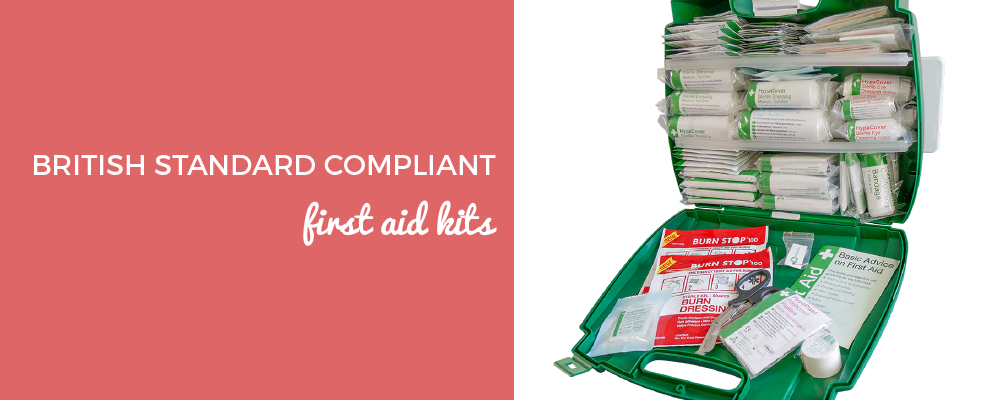
Accidents and illnesses can happen in the workplace, however low the risks. It does not matter whether the injury or illness is work-related. Employers should ensure that the adequate resources are available in case that happens, as it can prevent the aggravation of minor injuries and can help save lives! This blog post aims to list out the required size and contents of a first aid kit depending on differing factors from business to business.
Why a Standard for First Aid Kits?
Health and Safety Regulations help employers by setting standards to comply to, ensuring the adequate and appropriate first aid resources are available. Resources, for example, are first aid kits, first aid containers, facilities, and people. Thankfully, the 1981 regulations list out the steps and guidance to ensure that your workplace can respond timely to any accident.
It’s important to note that HSE will prosecute in cases where there is a ‘significant risk, a disregard for established standards or persistent poor compliance with the law’. These regulations help employers and employees to know what to expect during inspections and how to raise complaints. First aid is a basic way to ensure employers and employees can take care of each other in the workplace.
Minimum Contents of a First Aid Kit
British Standard Compliant Kits have replaced HSE Compliant Kits, this is due to the modernisation of first aid supplies and their enhanced functionality. These modern and more comprehensive kits can also help respond to a wider range of risks in the workplace.
There is no mandatory list of items to include in first aid boxes. HSE lists a minimum of first aid materials, however additional materials should be added in response to your individual and personalised first aid needs assessment. In addition, kits need to be easily accessible, suitably marked and available in all places where required.
A minimum list includes:
- a leaflet including guidance on first aid
- sterile plasters in different sizes individually wrapped
- sterile eye pads
- triangular bandages (sterile if possible) wrapped individually
- safety pins
- large sterile unmedicated wound dressings wrapped individually
- medium sterile unmedicated wound dressings wrapped individually
- disposable gloves
Size and Quantity of First Aid Kits
As a result of your first aid needs assessment, you will be able to choose the size and quantity of first aid kits your workplace requires. This is based on several factors:
Category of Risk
Low Risk workplaces such as offices, shops, libraries, etc. have low-level hazards. A minimum provision for these is to have an appointed person to make first aid arrangements and a suitable first aid kit.
High Risk workplaces deal with light engineering, food processing, warehousing, machinery, the manufacture of chemicals, etc. In that case, activities that involve special hazards require first aiders, additional training, additional first aid equipment and informing emergency services in advance.
Number of Employees
Depending on the number of people employed on site, employers will have to provide adequate first aid supplies. For example, larger organisations require larger numbers of first aid kits spread throughout sites. HSE recommends that a kit should be reachable within 60 seconds.
Static or Travelling
If there are employees who travel a lot, work remotely or alone, you should consider issuing personal first aid kits.
A useful guide that considers risk levels and number of employees: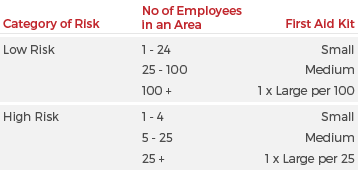
A guide to vehicle first aid kits: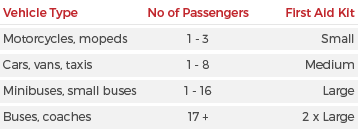
It’s worth noting that employers are not legally required to provide for non-employees such as visitors or the public. However, HSE strong recommends including those in the assessment.
First Aid Kit Contents Examples:
These First Aid Kits are British Standard compliant and thus contain the minimum for small, medium and large kits. These can be wall-mounted, for visibility, portability and accessibility. Mounts can display a ‘missing kit’ message when empty which allows for easy & speedy inspections.
Specialised First Aid Kits:
There are first aid kits for any type of workplace. We recommend kits with specialised materials depending on the environment your employees will be working in. For example, if they handle chemicals, make sure to provide a Body Fluid and Eyewash Kits. Catering businesses and food processing areas will benefit from a Burns Kit nearby. Here is a quick comparison of their contents. These kits are available in different sizes with different contents depending on the number of employees they cater to in addition to the nature of workplace hazards.
Comprehensive First Aid Points
It’s a good idea to have First Aid Points that can be personalised and can grow as your business grows. These combine the benefits of complying with the standard while providing all additional materials tailored to the working environment.
Chemicals & Hazardous Materials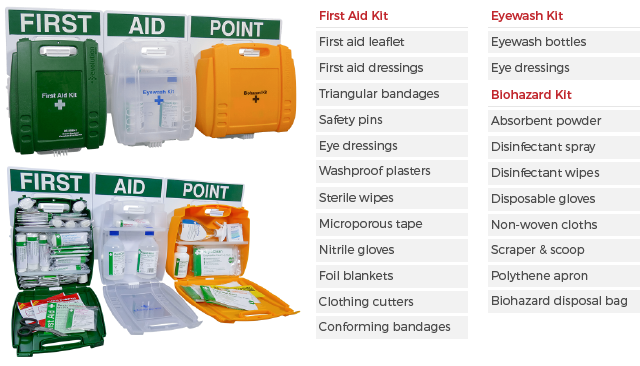
Sources:
- http://www.hse.gov.uk/pubns/priced/l74.pdf
- http://www.hse.gov.uk/pubns/hse41.pdf
- http://www.reliancemedical.co.uk/wp-content/uploads/BS8599-1_Guidelines.pdf
Request your very own Direct2U 2017 catalogue (click on the image)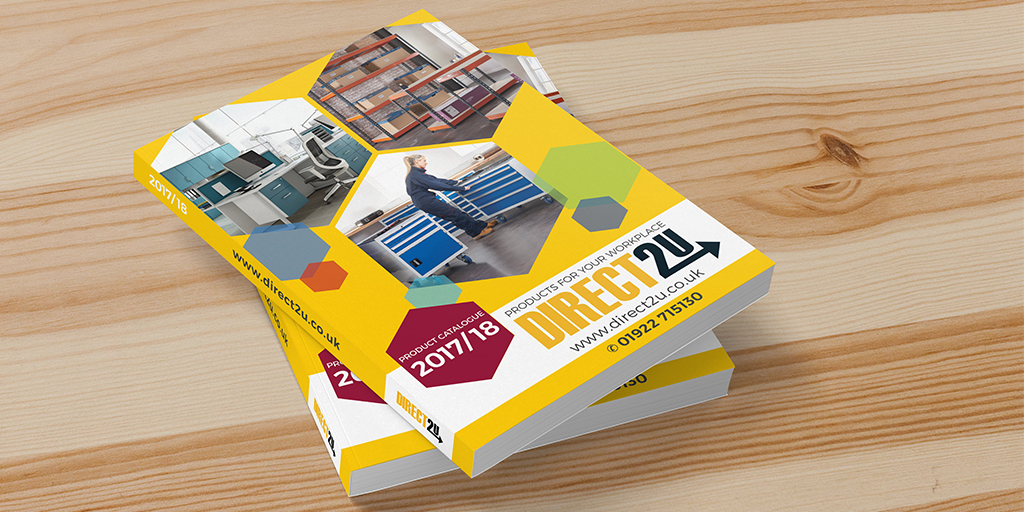
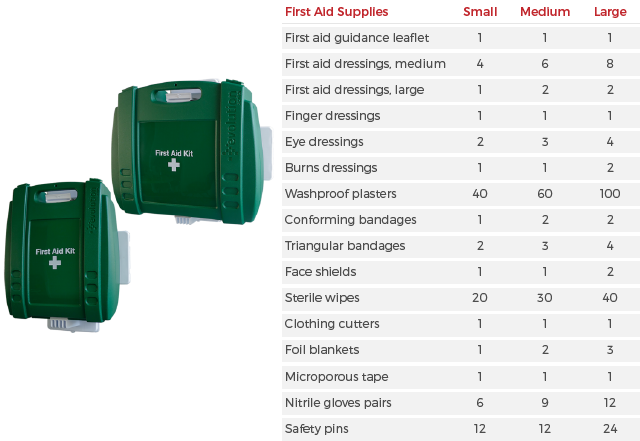

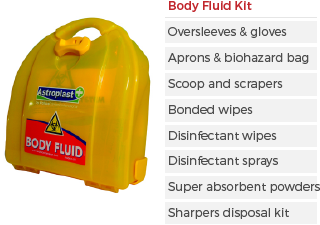

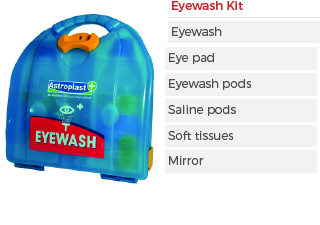

Pingback: Assessing Hazards at Work [HSE Reg & Case Studies] - Safety Blog